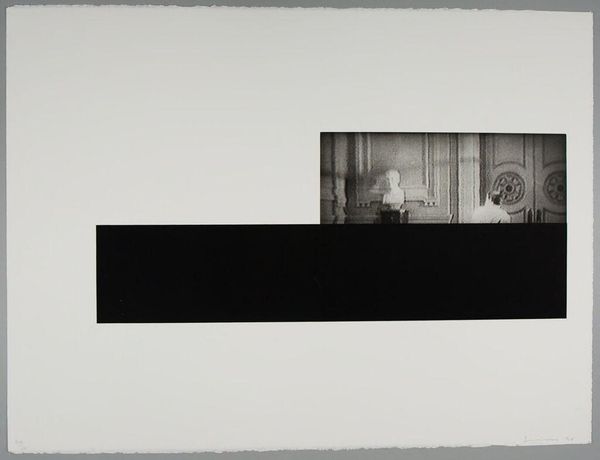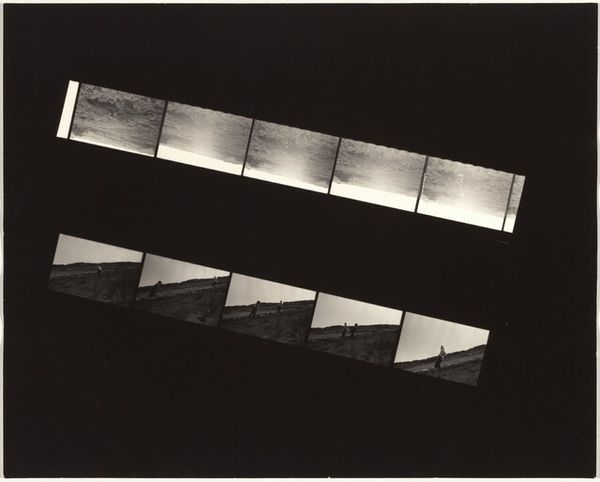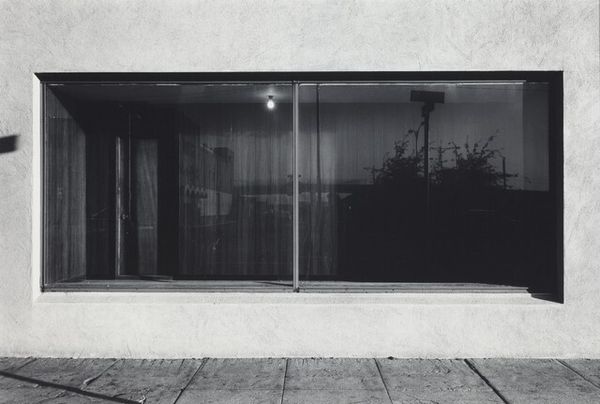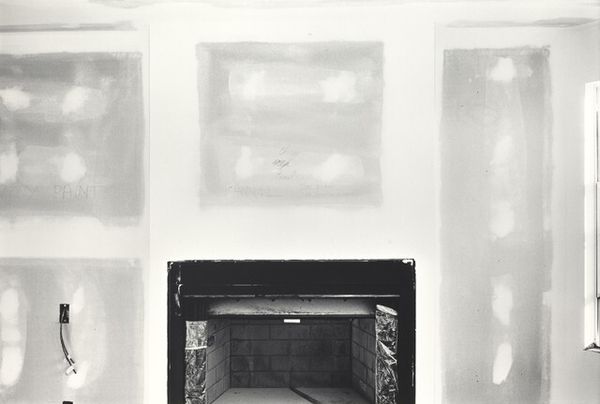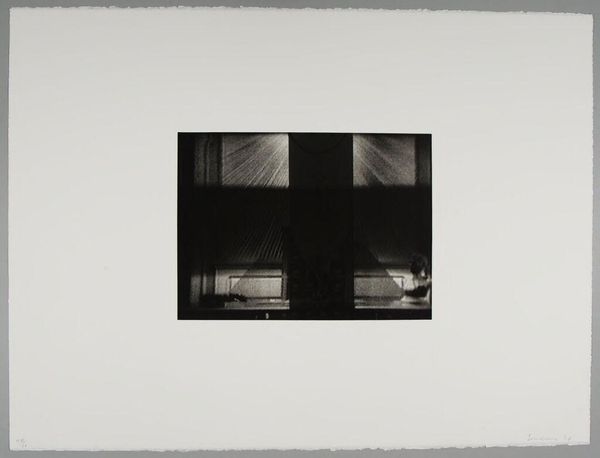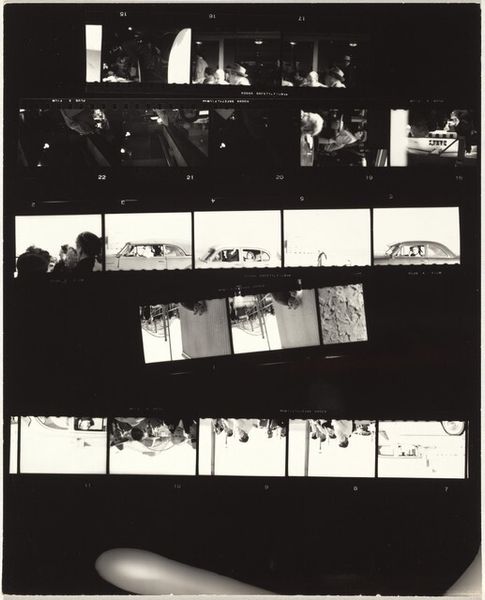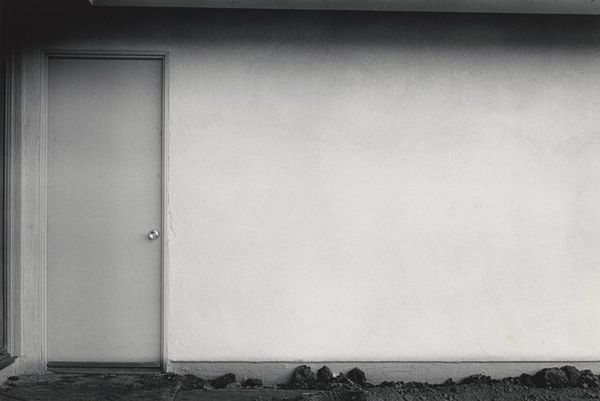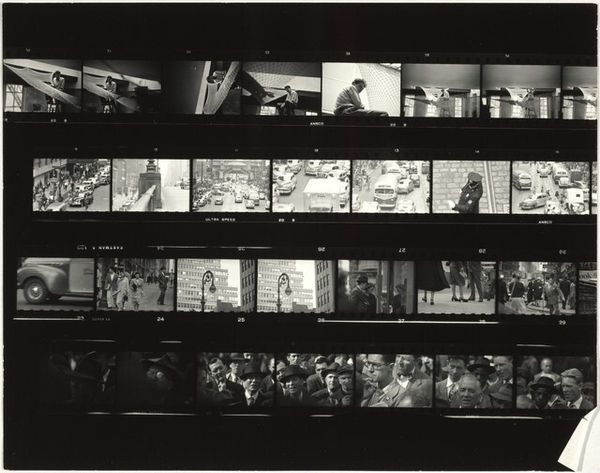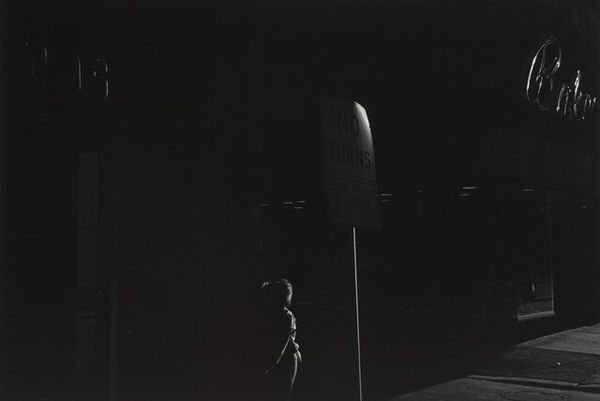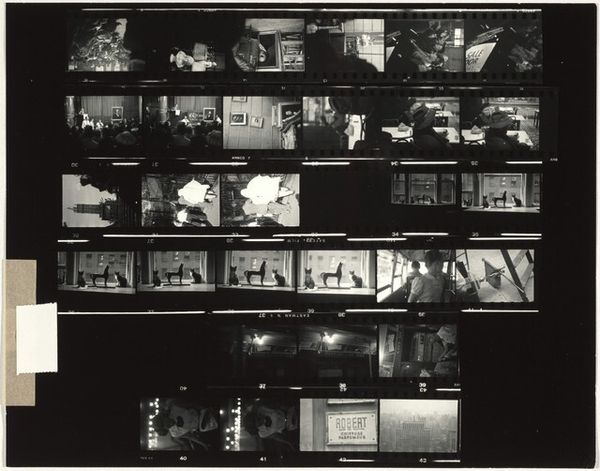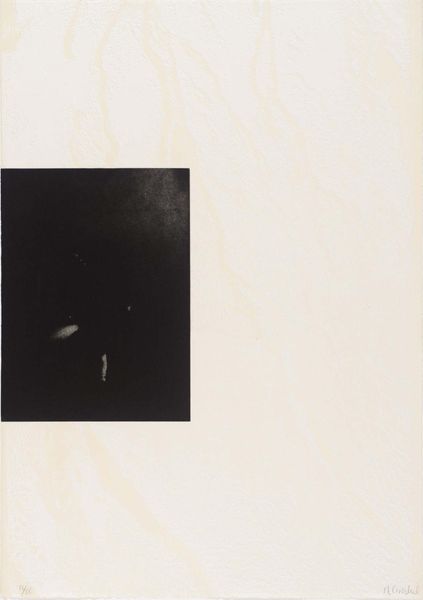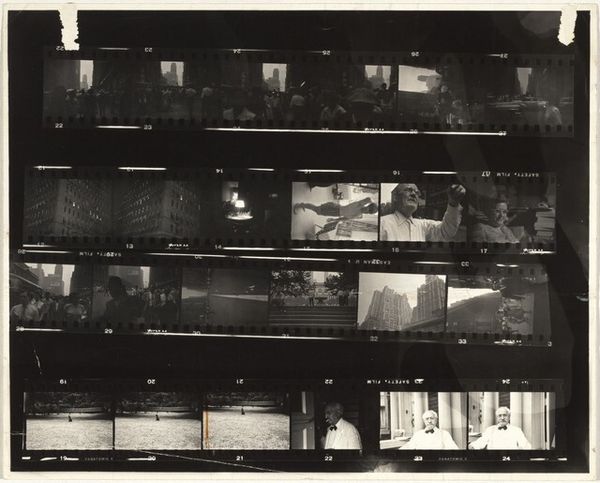
photography, gelatin-silver-print
#
black and white photography
#
landscape
#
black and white format
#
photography
#
black and white
#
gelatin-silver-print
#
monochrome photography
#
cityscape
#
monochrome
#
monochrome
Dimensions: image: 42.3 × 54.3 cm (16 5/8 × 21 3/8 in.) sheet: 47.6 × 57.6 cm (18 3/4 × 22 11/16 in.) mount: 61 × 50.8 cm (24 × 20 in.)
Copyright: National Gallery of Art: CC0 1.0
Curator: Sugimoto’s "101 Drive-In, Ventura," captured in 1993 using gelatin silver print, offers an intriguing study of light and shadow. The massive screen, nearly glowing, dominates the composition. What is your first reaction to it? Editor: A sense of eerie calm. It's as if the film itself has become the light source, pushing back against the darkness. It's a visual paradox, a black-and-white beacon. Curator: Precisely. Sugimoto often explored photography's capacity to record time and light, collapsing them into a single frame. What symbols jump out at you here? Editor: Well, the drive-in itself is symbolic. It evokes mid-century America, nostalgia, and shared cultural experiences. The blank screen, though, it's like a tabula rasa – a surface onto which we project our own desires, fears, and memories. Curator: A perfectly blank canvas then, but charged with meaning by its cultural context, no? Do you think it would it make a difference if there was some moving picture visible? Editor: Absolutely. The emptiness magnifies the inherent symbolism. With an image, it would just be *that* movie, that *moment.* The blankness universalizes the experience. What movie did *you* see there? It becomes deeply personal. I remember drive-ins as liminal spaces, existing between public and private spheres. Cars filled with anticipation and secrecy. Curator: My recollection, much the same… Sugimoto stretches exposure times dramatically in these "Theaters" series, so the films screened during capture literally turn into that pure, overwhelming white light, like collective imagination becoming manifest. Editor: That makes the process itself a form of ritual! The extended exposure transmutes the cinematic experience into a kind of iconic representation of cinema itself. The image feels like a ghostly afterimage of communal dreaming. Curator: Thinking about cultural memory then, that’s really at the core of Sugimoto's intention. The ghost of films past made monument in these stark black and white studies. The icon of shared experiences remains… Editor: Leaving us, finally, with our own interpretation, with our memories projected onto the stark surface, even decades after its making. Cinema and photographic images, entwined.
Comments
No comments
Be the first to comment and join the conversation on the ultimate creative platform.
